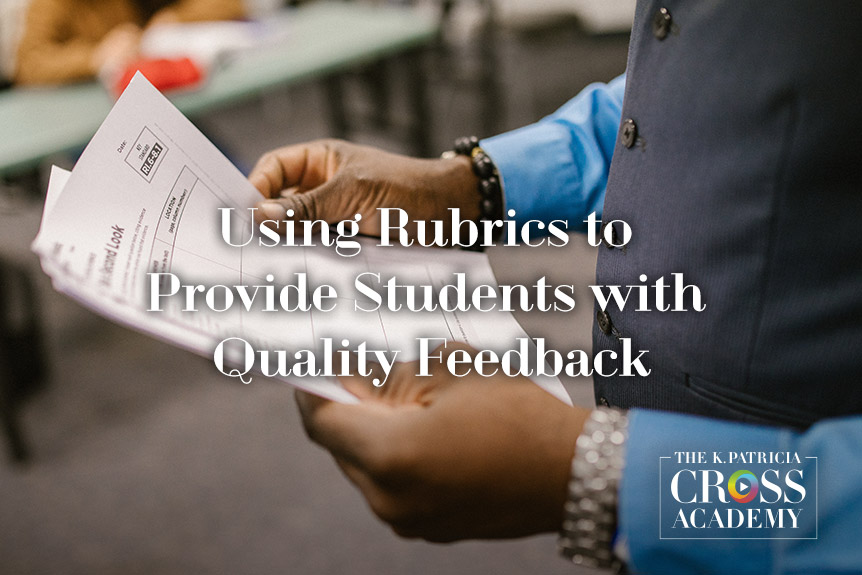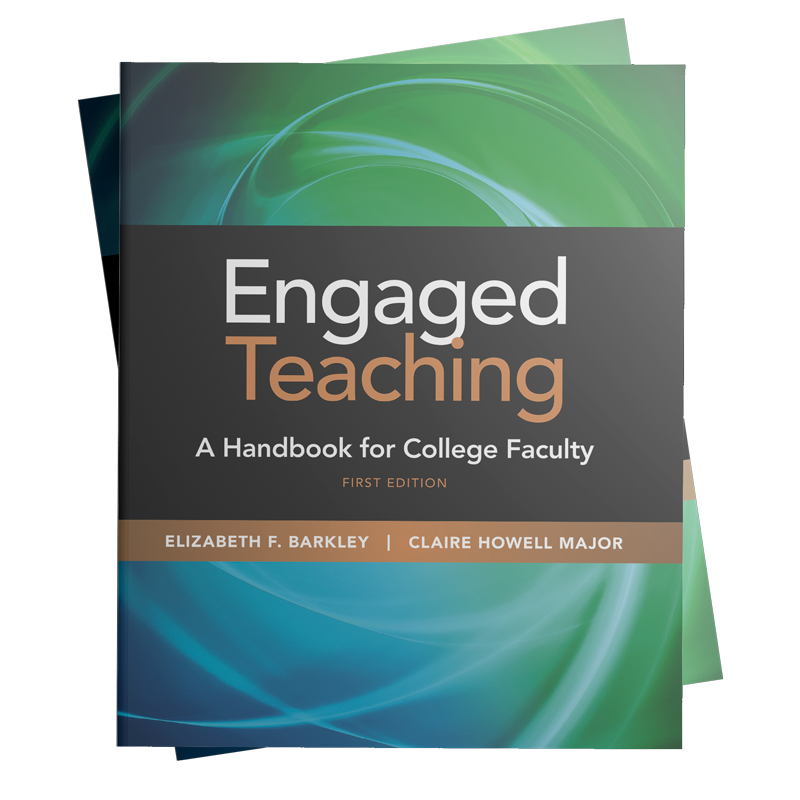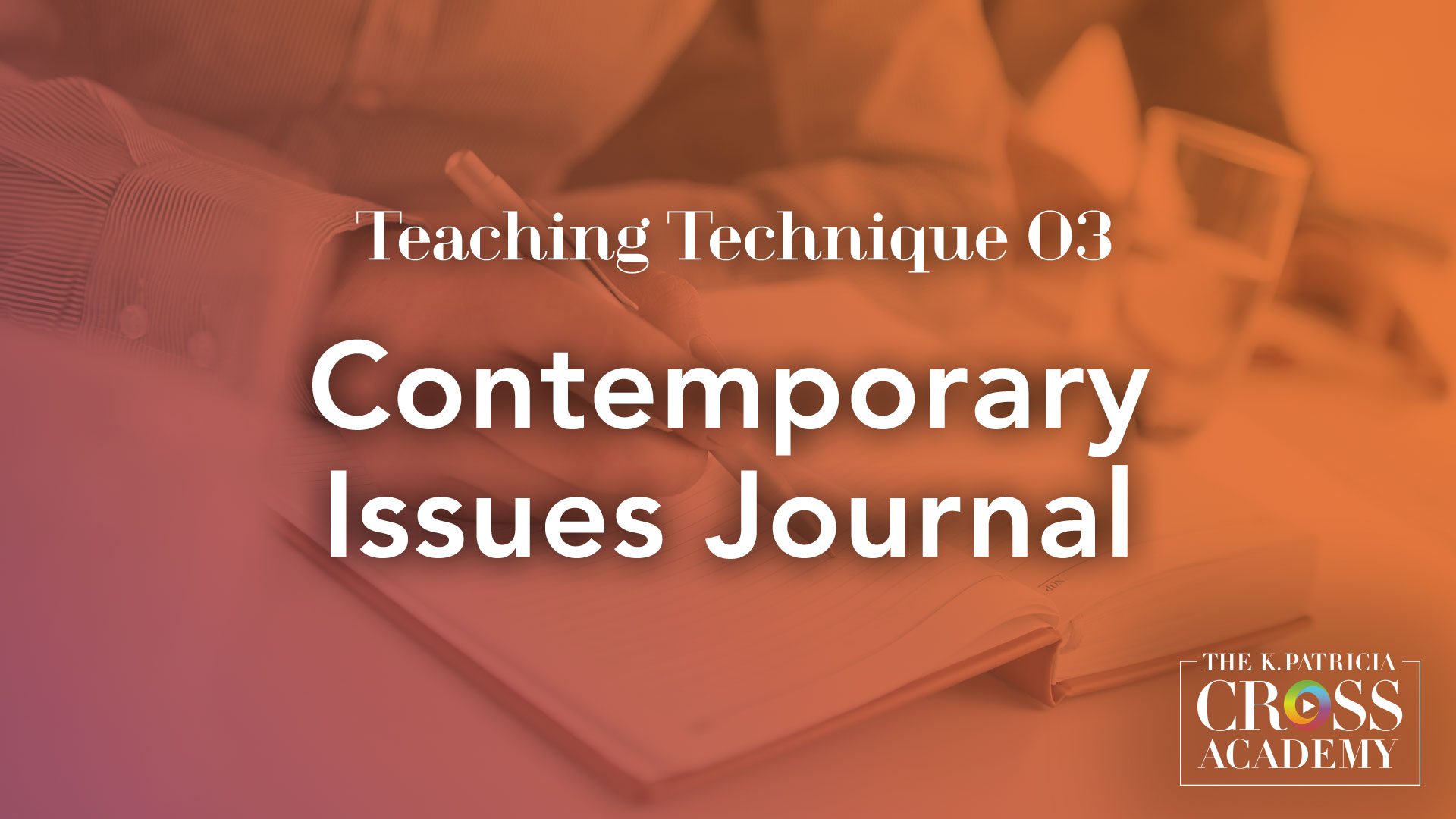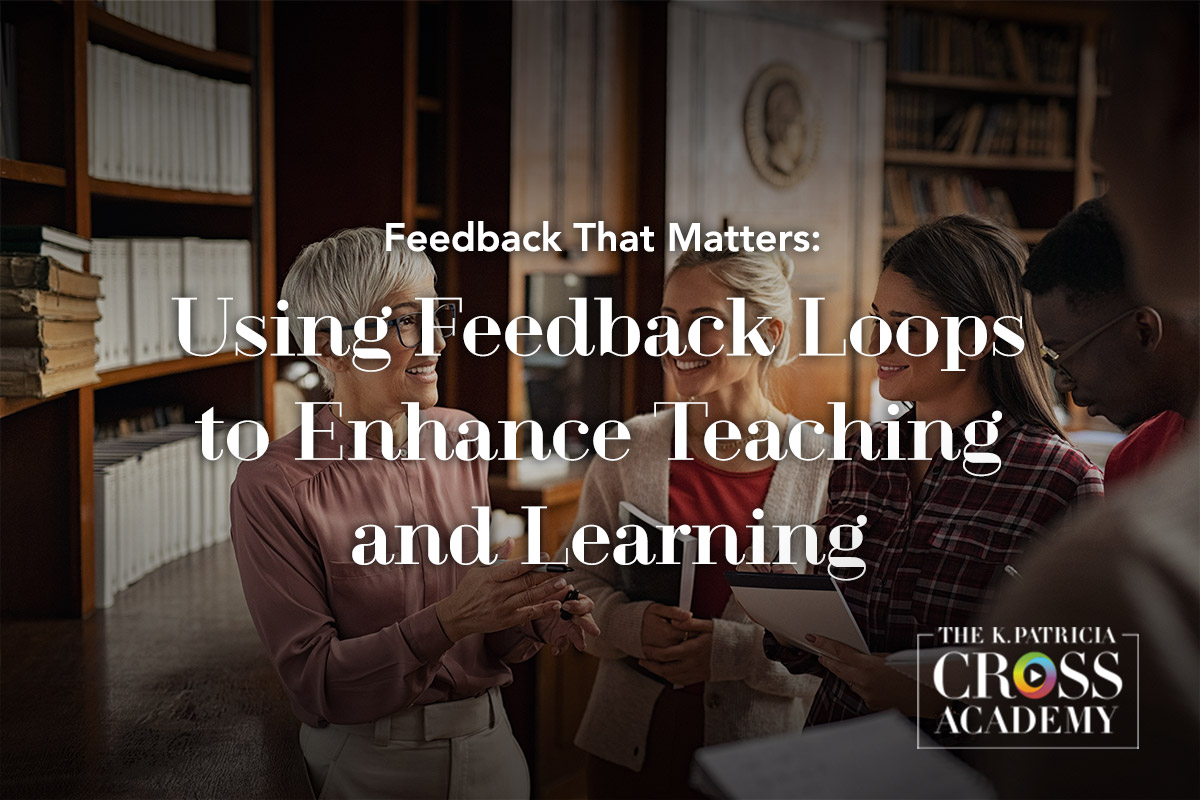
Imagine attempting to learn archery while blindfolded. You take aim and shoot, but without visual feedback, you wouldn’t know how close your shot came to hitting the bullseye. Indeed, you would likely have only a vague idea of whether you hit the target at all. Feedback is critical in developing new knowledge and skills. Students today have multiple ways to acquire the information foundational to learning. Without expert, personalized guidance, however, it is extremely hard to transform an assortment of facts and concepts into genuine understanding.
Learners need to know what skills they are doing correctly and incorrectly. They need to know how accurately and deeply they are comprehending the meaning of information. Students need feedback in order to adjust their efforts and improve so that they can succeed in a course. With feedback, students can adjust their perceptions of their performance in various learning activities and assignments. Feedback helps students make better decisions and, as such, is a means to autonomy. Providing this feedback is one of our most important responsibilities as an instructor.
Students today have multiple ways to acquire the information foundational to learning. Without expert, personalized guidance, however, it is extremely hard to transform an assortment of facts and concepts into genuine understanding.
Most teachers recognize how essential it is to offer students good, individualized feedback, but are hindered by the time and effort it takes to do so. An efficient and effective solution to this problem is to give learners feedback through a rubric. A rubric breaks down a task into its component parts and identifies a range of individual performance and achievement goals, allowing instructors to apply it to student work and determine which parts represent high, medium, or low quality. Thus, rubrics promote high quality feedback because they establish clear, relevant criteria and standards for measuring student progress toward or achievement of learning objectives.
Main Idea
A rubric is a useful tool for providing feedback as it breaks down a task into its component parts and identifies a range of individual performance and achievement goals.
There are many advantages to using rubrics. As Stevens & Levi point out (2005, p. 18), rubrics can:
- Contribute to effective instruction because they clarify expectations for students and help them identify their specific strengths and weaknesses, allowing them to incrementally improve the quality of their work.
- Allow instructors to offer more complex and challenging assignments because they can present multiple components in a clear and organized manner, saving time and effort in explaining assignments and clarifying expectations.
- Facilitate communication between instructors of the same course, sequenced courses, or similar assignments within a department or program regarding departmental or institutional standards, criteria, and assessments.
- Reduce the stress of grading because performance standards are clearly stated and student work either meets the explicit criteria for a standard or does not.
- Save time grading assignments and reduce the amount of time required to justify or explain the grade to students who dispute it.
- Reinforce fundamental learning objectives and expected performance levels.
- Provide a clear roadmap for learners.
Thus, while it takes time and effort to create an effective rubric, once completed, it has several benefits to both teachers and learners.

The complexity of rubrics varies, but there are two essential components:
- Criteria. These are the various “yardsticks” to indicate the different kinds of characteristics or features that are deemed important and worthy of measuring, and
- Standards. These are the “markers” on the yardsticks that indicate the level of quality, including which level is the minimum level for acceptable work.
Stevens and Levi (2005) break these out further and identify four fundamental elements: 1) task description, 2) components of the task, 3) descriptions of the performance range for each component, and 4) a scale (such as excellent/competent/needs work) to rate how well or poorly a given task has been performed.
The following is an adapted section from Stevens and Levi’s (2005) comprehensive rubric for a presentation assignment, which is provided to illustrate how rubrics can be used to effectively communicate assignment requirements to students while also saving instructors time during the grading process (p. 91).
There are many excellent resources available on creating and using rubrics and that offer in-depth discussion, directions, and models (e.g., Stevens & Levi, 2005; Walvoord & Anderson, 1998; Wiggins, 1998). In addition, Rubistar is a free online tool that guides instructors through the creation of quality rubrics.
What are some examples of rubrics used to evaluate Cross Academy Techniques?
Here are some example Cross Academy Techniques that include corresponding rubrics in their free downloadable materials.
Students look for recent events or developments in the real world that are related to their coursework, then analyze these current affairs to identify the connections to course material in entries that they write in a journal.
Students use computer-based tools, such as video, audio, graphics, and web publishing, to tell personal or academic stories about life experiences relevant to course themes.
A PLE is a set of people and digital resources an individual can access for the specific intent of learning. Students illustrate the potential connections through a visible network of the set.
Key Reference and Resources
Barkley, E. F., & Major, C. H. (2020). Student engagement techniques: A handbook for college faculty. (2nd ed). Jossey Bass/Wiley.
Andrade, H. (2000). Using rubrics to promote thinking and learning. Educational Leadership, 57 (5) 13–18.
Arter, J., & Chappuis, J. (2007). Creating and recognizing quality rubrics. Pearson.
Stevens, D. D. & Levi, A. J. (2005). Leveling the field: Using rubrics to achieve greater equity in teaching and assessment. Essays on Teaching Excellence, Professional and Organizational Development Network in Higher Education, 17(1). https://pdxscholar.library.pdx.edu/cgi/viewcontent.cgi?article=1087&context=edu_fac
Stiggins, R. J. (2001). Student-involved classroom assessment. (3rd ed). Prentice-Hall.
Reddy, Y., & Andrade, H. (2010). A review of rubric use in higher education. Assessment & Evaluation in Higher Education, 35(4), 435-448.
Suggested Citation
Barkley, E. F., & Major, C. H. (n.d.). Using rubrics to provide students with quality feedback. CrossCurrents. https://kpcrossacademy.ua.edu/using-rubrics-to-provide-students-with-quality-feedback/

Engaged Teaching
A Handbook for College Faculty
Available now, Engaged Teaching: A Handbook for College Faculty provides college faculty with a dynamic model of what it means to be an engaged teacher and offers practical strategies and techniques for putting the model into practice.








